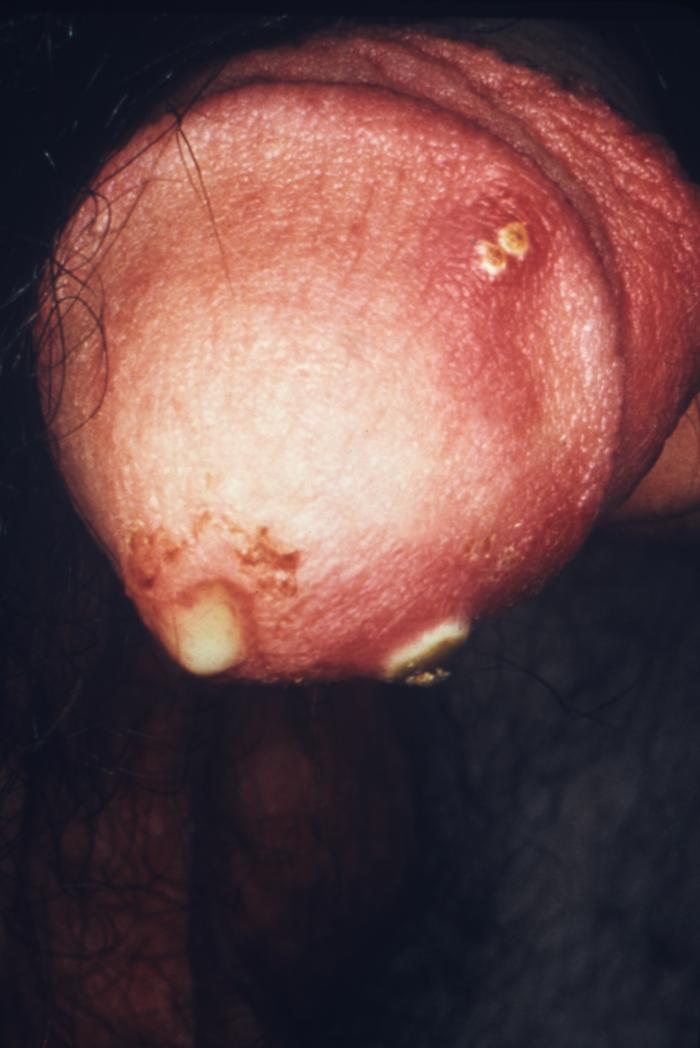
A single injection of penicillin cured almost every infected person. In the past, the treatment of uncomplicated gonorrhea was fairly simple. What are the treatments for gonorrhea? Can gonorrhea be cured? Gonorrhea infections in people with conditions causing seriously depressed immune function, such as AIDS or immunosuppressive treatments, can be even more serious. Occasionally, if the infection is severe enough, a localized area of infection and pus-like discharge (an abscess) form (tubo-ovarian abscess) that can be life-threatening, and major surgery may be necessary. Pelvic infection can lead to difficulty in becoming pregnant or even infertility because of tubal damage or obstruction. Symptoms of pelvic infection include fever, pelvic cramping, pelvic pain, or pain with intercourse. PID occurs in many women with gonorrheal infections of the uterine cervix. Gonorrheal infection of the Fallopian tubes can lead to a serious, painful infection of the pelvis known as pelvic inflammatory disease or PID. Untreated gonorrhea can lead to a severe pelvic infection with inflammation of the Fallopian tubes and ovaries.

Most infected women have no symptoms, especially in the early stages of the infection. QUESTION Condoms are the best protection from sexually transmitted diseases (STDs). Prevention of the spread of STDs is dependent upon the counseling of at-risk individuals and the early diagnosis and treatment of infections. While condoms are useful in decreasing the spread of certain infections, such as chlamydia and gonorrhea, they do not fully protect against other infections such as genital herpes, genital warts, syphilis, and AIDS. All other forms of sexual contact carry some risk.Ĭondoms are commonly thought to protect against STDs. Unfortunately, syphilis, herpes, and other infections can be contracted through this relatively simple and harmless act. Sex in the context of a monogamous relationship wherein neither party is infected with an STD also is considered "safe." Most people think that kissing is a safe activity. The only truly effective way to prevent STDs is abstinence.

Therefore, public awareness and education about these infections and the methods of preventing them are important. Many STDs can be present in, and spread by, people who do not have any symptoms of the condition and have not yet been diagnosed with an STD. Even gonorrhea, once easily cured, has become resistant to many of the older traditional antibiotics. Many STDs are treatable, but effective cures are lacking for others, such as HIV, HPV ( human papillomavirus), and possibly hepatitis B. STDs probably have been around for thousands of years, but the most dangerous of these conditions, the acquired immunodeficiency syndrome ( AIDS) was first recognized in 1981, and the causative human immunodeficiency virus ( HIV), was first identified in 1984. Sexual contact includes kissing, oral sex, and the use of sexual "toys," such as vibrators. It is important to realize that sexual contact includes more than just sexual intercourse (vaginal and anal). STDs are sometimes referred to as sexually transmitted infections (STIs) since they involve the transmission of a disease-causing organism from one person to another during sexual activity. Sexually transmitted diseases ( STDs) are infections that can be transferred from one sexual partner to another through any type of sexual contact. What are STDs and how do you prevent them?

GONORRHEA SYMPTOMS WOMEN DISCHARGE SKIN
It cannot live outside the body for more than a few seconds or minutes, nor can it live on the skin of the hands, arms, or legs.


 0 kommentar(er)
0 kommentar(er)
